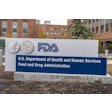What is the FDA's role in determining dental mercury's harmful impact on the environment? Why doesn't the FDA implement a rule proposed in 2002 that calls to classify mercury tooth fillings under the medical devices regulations?
These are some of the questions that will be addressed at a hearing by the U.S. House Committee on Oversight and Government Reform on Nov. 14.
According to the Mercury Policy Project -- a nonprofit advocacy organization -- dental mercury release (in the form of waste amalgam) is more than a third of the mercury that ends up in municipal waste water treatment plants. This mercury, the Project points out, ends up the environment and ultimately, in the fish Americans eat.
"The dental industry should embrace a 'clean hands' policy and stop its mercury use from getting onto American's dinner plates," said Michael Bender, director of the Mercury Policy Project in a press release. "As health professionals, dentists have a moral obligation to protect the public from mercury, a dangerous neurotoxin."
Bender, who is also one of the witnesses at the hearing, plans to prove that dental mercury air emissions (from burning of sludge, cremations, and emissions from dental offices) may be more than five times higher than recent Environmental Protection Agency (EPA) estimates.
Other witnesses at the hearing include:
Panel I
•Mr. Ephraim King, Director, Office of Science and Technology, Office of Water, Environmental Protection Agency
•Dr. Norris Alderson,Director, Office of Science and Health Coordination, Food and Drug Administration
Panel II
• Mr. Ray Clark,Senior Partner, The Clark Group, LLC
• Mr. Bruce Terris,Partner, Terris, Pravlik & Millian, LLP
• Mr. C. Mark Smith,Co-Chair, Mercury Task Force, New England Governor’s Conference
• Mr. Michael Bender,Executive Director, Mercury Policy Project
• Mr. Rod Mackert, Dentist and Faculty Member, Medical College of Georgia



















